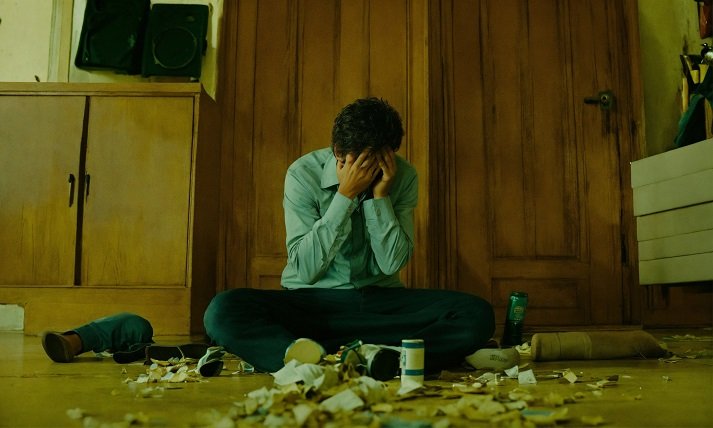Introduction
There are films in the ever growing cinematic canon that shine and thrill, enthralling viewers with their ingenuity. On the other hand, there are those poor works of art that fall short and fail to arouse admiration. But are these ruined films more complex than first appears? Do they really have nothing good to offer, or are there hidden talents they have yet to reveal? In this in-depth analysis, we set out to investigate the realm of trashed trashed movie review films, analyzing their shortcomings, praising their merits, and eventually discovering the reality underneath their frequently misconstrued existence.
Defining Trashed Movies
Films classified as “trashed” belong to a group that, in addition to not receiving favorable reviews from critics, have frequently struggled financially, not being able to recover their production expenses or have a big impact at the box office. There are many shortcomings in these films, ranging from bad direction and screenplay to shoddy acting and technical issues.
The Anatomy of Failure
A movie’s failure is frequently the result of a number of interrelated circumstances, each of which had a different impact on the film’s demise. Poor directing can lead to uninspiring performances and a lack of visual flair, while poor writing can provide a disorganized plot that is uninteresting to audiences. Technical faults can further diminish the overall viewing experience and leave viewers feeling let down, such as shoddy editing or cheesy special effects.
Cultural Context and Reception
Both prevalent trends in the film industry and cultural variables have a significant impact on how well a movie is received. When new perspectives and societal attitudes emerge, what was once considered a failure in one cultural context or era may become accepted in another. Similar to this, films that defy conventions or push limits could encounter opposition when they first come out but end up being praised as groundbreakers later on.
The Cult Following Phenomenon
Over time, several discarded movies have managed to garner devoted cult followings despite their original failure. Due to their eccentricity, subversive ideas, or sheer daring, these movies frequently have elements that connect with viewers on a deeper level. Trash films can become cult masterpieces thanks to cult followings, which guarantees their enduring popularity and importance in popular culture.
Case Studies in Trashed Cinema
By analyzing particular instances of poorly received films, we can acquire understanding of the different elements that lead to their downfall. From notorious failures like “Waterworld” and “Gigli” to harshly criticized hits like “Catwoman” and “The Room,” each case study provides insightful insights into the pitfalls of filmmaking and emphasizes the significance of excellent screenplay, directing, and execution.
The Role of Expectations
Our opinions of a film might be greatly influenced by our expectations. The disappointment of not winning can be especially great when a movie is hailed as the next big thing or as a possible Oscar candidate. On the other hand, a film may benefit from low expectations if they enable it to surpass moderate expectations and please viewers.
The Legacy of Trashed Movies
Even though they are a box office disaster, garbage movies can have a long-lasting effect on the film industry. In the annals of cinema history, these films hold a special position because of their influence on upcoming filmmakers, their inadvertent humorous value, or their cautionary tale status. They serve as a reminder of the advantages and perils associated with pushing artistic boundaries.
Finding Merit in the Misunderstood
Even though bad films are sometimes written off by both reviewers and viewers, they sometimes have redeeming features that are worth a further look and admiration. There is frequently more to these movies than meets the eye, just waiting to be discovered by astute viewers prepared to look past their shortcomings. This could be in the form of an exceptional performance, a scene that sticks in your memory, or a daring artistic decision.
The Importance of Constructive Criticism
When constructive critique is provided, it can help filmmakers learn from their mistakes and emphasize areas for development in destroyed movies rather than casting them off as irreparable failures. Critics may significantly contribute to raising the bar for filmmaking and encouraging the production of more compelling and powerful movies by pointing out what went wrong and making recommendations on how to do things better in the future.
Looking to the Future trashed movie review
As we draw to a close our examination of destroyed films, it’s critical to think about what this means for filmmaking going forward. We may work to create a more vibrant and diverse cinematic scene that rewards originality, innovation, and artistic risk-taking by acknowledging the past and learning from its mistakes.
Conclusion
In conclusion, the world of ruined movies is an intricate and varied one that is full of mystery and disappointment. Even if both reviewers and viewers may have written these movies off, they nevertheless provide insightful perspectives on the creative process and the fluidity of cultural taste. We may develop a greater understanding of the varied and unpredictable character of film by seeing destroyed films with an open mind and a desire to see past their apparent defects.
FAQ
Are trashed movies always objectively bad?
Not always. Even if bad films might not have struck a chord with viewers or reviewers when they were first released, opinions about their quality can differ greatly, and some can even discover redeeming aspects after giving them a closer look.
Why do some trashed movies develop cult followings?
Due to its distinctive features—which can include unusual storytelling, campy acting, or striking images that connect with some audiences in unexpected ways—trashy movies frequently inspire cult followings.

